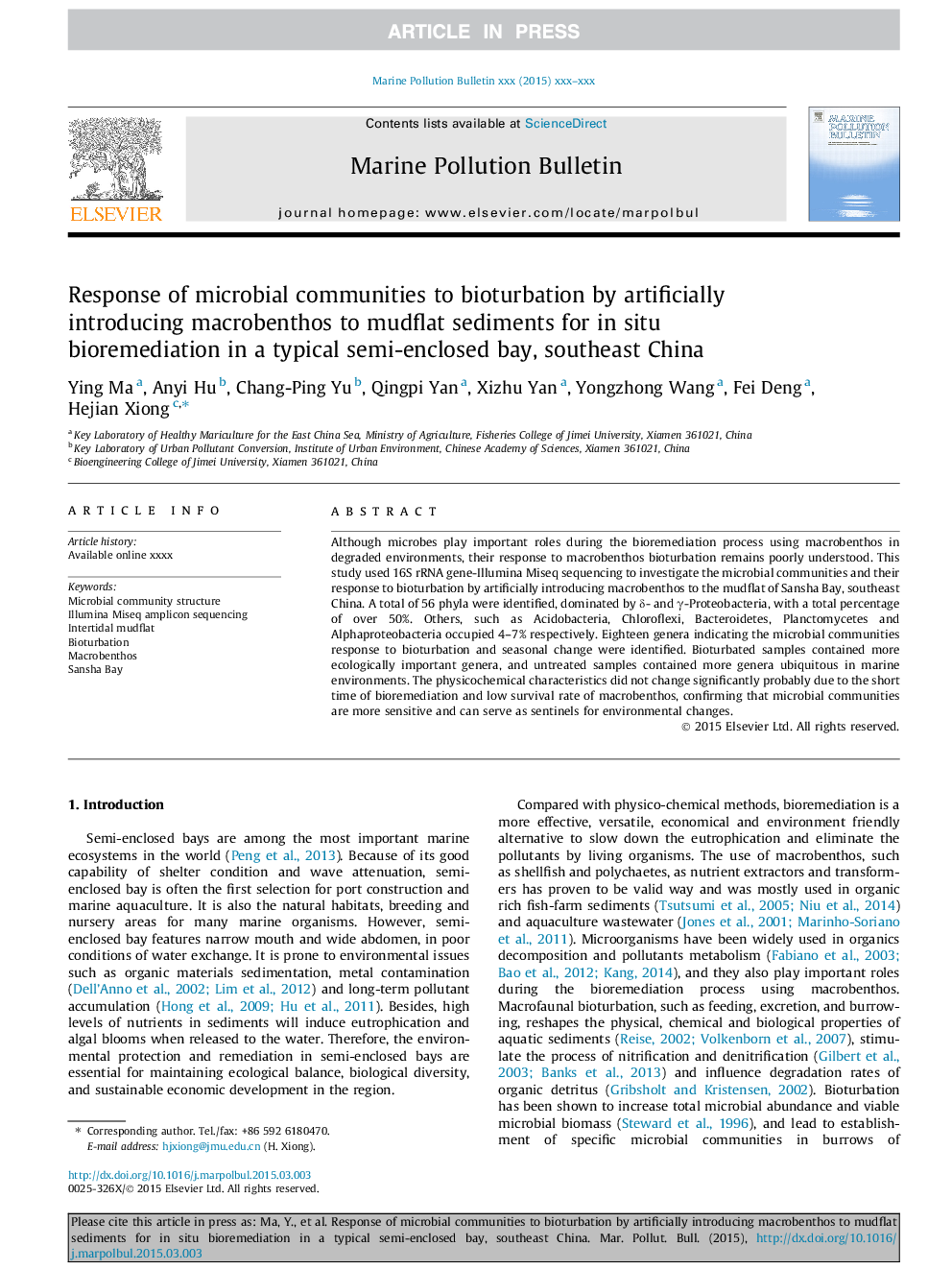| Article ID | Journal | Published Year | Pages | File Type |
|---|---|---|---|---|
| 6356828 | Marine Pollution Bulletin | 2015 | 9 Pages |
Abstract
Although microbes play important roles during the bioremediation process using macrobenthos in degraded environments, their response to macrobenthos bioturbation remains poorly understood. This study used 16S rRNA gene-Illumina Miseq sequencing to investigate the microbial communities and their response to bioturbation by artificially introducing macrobenthos to the mudflat of Sansha Bay, southeast China. A total of 56 phyla were identified, dominated by δ- and γ-Proteobacteria, with a total percentage of over 50%. Others, such as Acidobacteria, Chloroflexi, Bacteroidetes, Planctomycetes and Alphaproteobacteria occupied 4-7% respectively. Eighteen genera indicating the microbial communities response to bioturbation and seasonal change were identified. Bioturbated samples contained more ecologically important genera, and untreated samples contained more genera ubiquitous in marine environments. The physicochemical characteristics did not change significantly probably due to the short time of bioremediation and low survival rate of macrobenthos, confirming that microbial communities are more sensitive and can serve as sentinels for environmental changes.
Related Topics
Physical Sciences and Engineering
Earth and Planetary Sciences
Oceanography
Authors
Ying Ma, Anyi Hu, Chang-Ping Yu, Qingpi Yan, Xizhu Yan, Yongzhong Wang, Fei Deng, Hejian Xiong,
